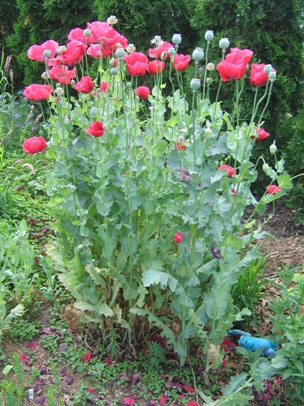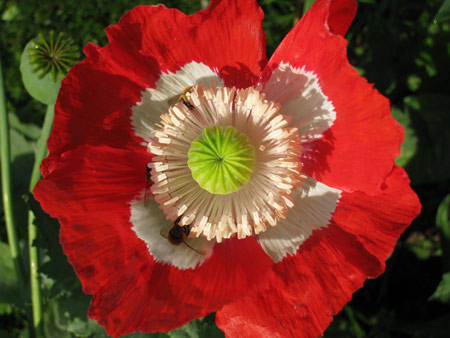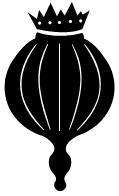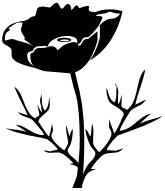Adaptations
Papaver somniferum, the plant we see today, has
evolved from a much simpler plant. Some of the adaptations
it exhibits include
- Its seeds and ovules are protected by the ovary wall in
a carpel. The ovary becomes the fruit
- Tough leaves and seed coats along with vessel
elements all it to be resistant to cold weather
and
drought
- Flowers allow specialized pollination and seed
dispersal
- Vascular system allows plant to be a land-plant and
grow as tall as it does (up to a meter in height)
- Vessel members are much more efficient method of
water transportation than tracheids
- It's deciduous which gives protection against the cold
and snow
- Have a pleasant scent that attracts bees to them.
Interactions with other Organisms
Even though Papaver somniferum relies mainly on self-pollination, cross-fertilization occurs as well. The main pollinators observed are honeybees and flies. This type of relationship is commensal because the plant gets something out of it, pollination; the insect doesn't get anything, but doesn't get hurt either. P. somniferum plants can undergo attacks on their seedling by slugs and snails, although it is not common. This type of relationship is parasitic, when one organism inflicts harm on the other. Most poppies are surprisingly free from pests and disease.
Papaver somniferum fits on the food web as a producer since it provides food for other organisms and is photosynthetic so makes its own food. However, some of the insects and other organisms may die or have side effects from eating the opiate-filled fruit. Many of the opium poppies today are cultivated for human use, and not naturally in the wild. The seeds from opium poppies are used by humans in various food items. Also the whole plant is often ground up to make an oil cake that is served to cattle. Opium poppy seeds are sold as bird food in parts of England.
Can you fail a drug test from eating a poppy seed muffin? Check out some Interesting Facts and find out!



